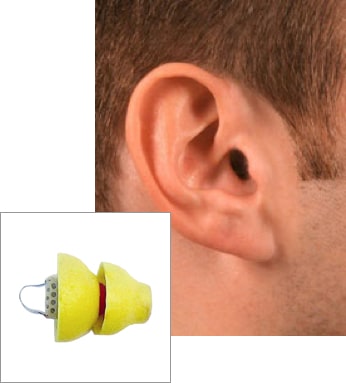Hearing aids have improved greatly with the advent of digital technology. If you’re picturing big and bulky devices with questionable sound quality, you’ll be pleased to learn today’s instruments are smaller, more comfortable and provide sound that is more natural. They are available in a variety of sizes and styles, so finding one that appeals to your lifestyle needs and cosmetic preferences should be easy.
Here are the types available:
Receiver-in-the-Canal (RIC)
An RIC hearing aid consists of a tiny housing containing all electronics except the receiver, which is positioned behind the ear. A thin tube connects the housing to the receiver, which is worn in the canal of the ear.
It’s a small and discreet unit but powerful enough for treating mild to moderately severe hearing loss.
Behind-the-Ear (BTE)
The most popular style of hearing aid (about 60 percent of users choose this type), a BTE device is curved to match the contour of the ear and rests directly behind the ear. The housing, which contains all the electronics, is encased in plastic and connects to the ear canal with a thin, clear tube or ear mold.
Though more visible than other styles, the BTE is simple to use, making it a popular choice for children. It’s powerful enough for all types of hearing loss.
Completely-in-the-Canal (CIC)
This hearing aid is placed in the ear canal and is the smallest available. It takes advantage of the ear’s natural ability to collect sound, and its discreet size makes the device virtually invisible to others.
The trade-off is a shorter battery life, and it may prove difficult to adjust for those with poor manual dexterity. This is a good choice for mild to moderate hearing loss.
In-the-Canal (ITC)
This style is also designed to fit in the ear canal, but not as deeply as a CIC device, resting securely in the lower portion instead. It’s a little larger, making it easier to insert and remove and extending the battery life.
Best for patients with mild to moderate hearing loss.
In-the-Ear (ITE)
This hearing aid is designed to fill the outer portion of the ear, and is larger than those worn in the ear canals. It is less discreet, but the size allows for more features and makes the unit easier to adjust.
A bigger battery translates to longer life and means those with severe or profound hearing loss can benefit from this style.
Invisible-in-the-Canal (IIC)
This model is the smallest device currently available. The entire hearing aid sits inside the ear canal, making it practically invisible. Since this model is so small, it cannot fit any additional features and also takes the smallest batteries. The smaller the battery, the quicker they drain. Since this device sits so deep inside the ear, it is less likely to pick up background noise, such as wind, but is prone to earwax blockage. This model can treat mild to moderate hearing loss.
Lyric

Lyric is the world’s only 100 percent invisible hearing aid that delivers clear, natural sound. It is meant to be worn 24 hours a day, seven days a week, for up to four months at a time. You do not need to take it out, even thorough daily activities such as showering, exercising and sleeping.
This device works by relying on the outer ear’s natural anatomy to direct sound to the device, which is then amplified and sends to the eardrum. This allows for improved directionality and localization (the ability to tell where sounds are coming from) and sound that is clear and natural. Its placed deep in the ear canal, a mere 4mm from the eardrum, which minimizes the occlusion effect and reduces feedback.
Lyric may not be perfect for everybody. It is best for those with mild to moderately severe hearing loss.
You can call our San Francisco office at (415) 780-2001 or our Stockton office at (209) 946-7378 for more information or to schedule an appointment.